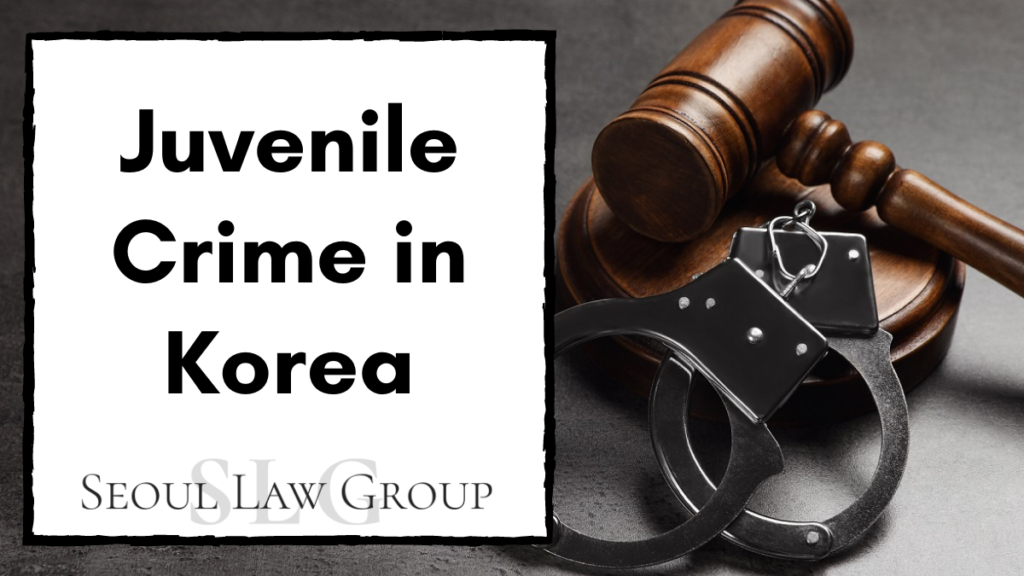Juveniles and Children Get “Protective Detention” Instead of Punishment
In previous article, we established that children under nineteen years old (international age) can be sent to the Juvenile Department instead of the criminal court, and they get “protective detention” instead of “punishment.” Now let’s look over what is “protective detention” is.

Table of Contents
Juvenile Protective Detention
There are ten different kinds of protective detention, according to the Article 32 of Juvenile Act.
- To consign a juvenile concerned of the care and custody of his or her guardian or any person who can provide protection for the juvenile in substitution for the guardian.
- To issue an order to attend a lecture.
- To issue a community service order.
- To place a juvenile concerned under the short-term probation of a probation officer.
- To place a juvenile concerned under the long-term probation of a probation officer.
- To entrust a juvenile concerned for the care and custody to a child welfare institution under the Child Welfare Act or other juvenile protection institution.
- To entrust a juvenile concerned to a hospital, a sanatorium or a juvenile medical care and protection institution under the Act on the Treatment of Protected Juveniles, Etc.
- To transfer a juvenile to the Juvenile Reformatory within one month.
- To transfer a juvenile to the Juvenile Reformatory for a short-term.
- To transfer a juvenile to the Juvenile Reformatory for a long-term.
1. Custody of Guardian
Number 1 looks like simply letting the child stay in their parents’ care, which would the lightest detention. But sometimes it goes deeper than that; some children don’t have parents, or their parents are unfit to be their guardian. The judge can appoint the public guardian to protect and guide those children instead of their parents.
2. Attend a Lecture
Number 2 is letting the child attend a certain lecture for a certain amount of time. The judge decides what kind of lecture they should attend, and how long they should do it. For instance, if the child committed a sexual crime, they might be ordered to attend the lecture about sex education and gender sensitivity.
3. Community Service
Number 3 is letting the child to serve the community for a certain amount of time. The judge can decide what kind of community service they should do, and how long they should do it.
4. Probation Officer
Number 4 and 5 are about probation of a probation officer, which allows the child to live their normal life while still being guided and supervised by the professional officer. Number 4 (short-term probation) and number 5 (long-term probation) are essentially the same thing, except that “short-term probation” is only one year, while “long-term probation” is two years and can be extended further.
5. Juvenile Protection Institution
Number 6 is sending the child to stay in a child welfare institution or other juvenile protection institution. Now we are getting serious, because this means the child should leave their home and stay away from their family. The difference between number 6 and 8~10 is that number 6 is for private institution while number 8~10 is for public institution.
6. Medical Institution
Number 7 is sending the child to stay in a hospital or other medical institution. This happens when the child is suffering from mental illness, or they need medical attention from doing drugs or other illicit substance.
7. Juvenile Reformatory
Number 8, 9, 10 are about sending the child to stay in “Juvenile Reformatory,” which is, to be simple, a detention center for youth. Number 8 is sending them for only one month, number 9 is for a short amount of time (six month maximum), number 10 is for a long amount of time (two years maximum). While living in Juvenile Reformatory, children can get vocational training or attend school, depend on their situations.
All these protective detentions are not intended to be “punishment” but education for children to help them get better. It doesn’t leave any criminal record.
Juvenile Detention Case Study
Let us introduce another successful case of Seoul Law Group related to this matter. Our client was a fifteen-year-old boy who committed sexual crime, and he was sent to criminal court as a defendant. Worst of all, he was detained, and had to stay in detention center for months, away from home. He missed his parents very badly and spent many nights crying behind the bars.
SLG lawyer argued that our client was too young and didn’t know what he was doing, therefore he should be sent to Juvenile Department. The judge accepted our arguments and sent the boy to Juvenile Department, which allowed him to go back to his home. In the end he was ordered to attend lecture, participate in community service, and get long-term probation, but the boy and his parents was still grateful as long as they could live together.
